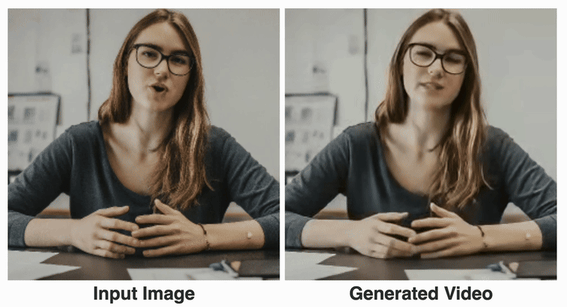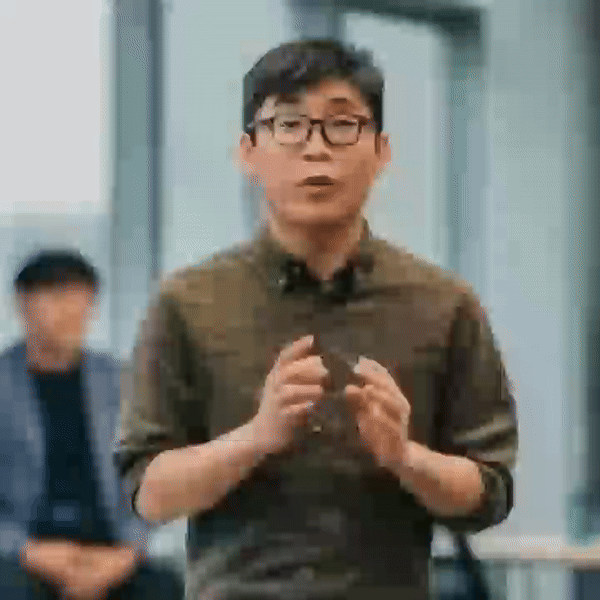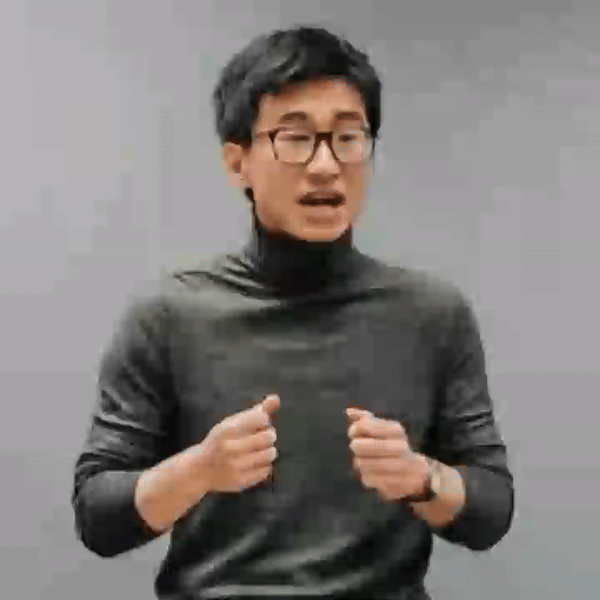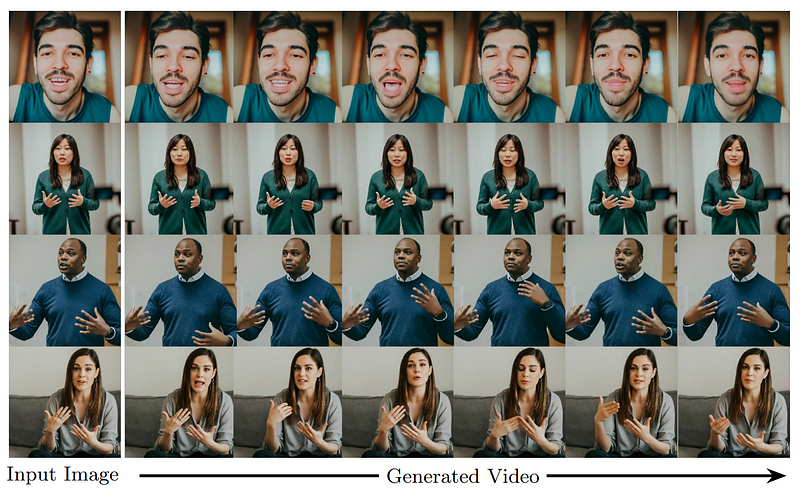Unveiling Google's VLOGGER: AI-Driven Human Vlogs from Audio
Written on
The Rise of AI in Vlogging
Artificial Intelligence is advancing rapidly, moving beyond mere image manipulation to creating videos that raise both excitement and concern. Google recently published a research paper unveiling a groundbreaking AI framework named VLOGGER, which enables the generation of a video of a human vlogger using just an audio clip and a single image. This innovation pushes the boundaries of AI technology, taking it to new, and potentially unsettling, heights.
What Is VLOGGER?
VLOGGER employs a multimodal diffusion technique to create lifelike videos of individuals based solely on audio input. The AI can produce photorealistic footage of a person speaking, complete with authentic head movements, facial expressions, gazes, and even hand gestures.
Here’s a glimpse of the technology in action:

This model also possesses the capability to modify existing video content, allowing users to alter a subject's facial expressions. While it's doubtful that VLOGGER will entirely replace YouTube creators, it represents an intriguing shift in the vlogging landscape.
How VLOGGER Operates
Curious about how this AI synthesizes realistic human videos? The research paper dives into the technical aspects, but in layman's terms, it utilizes a two-stage diffusion model.
The first stage predicts the 3D head and body movements based solely on audio. The second stage translates this data into photorealistic video frames using the 3D motion and the provided image as input. A touch of AI magic occurs between these stages, resulting in convincingly realistic vlogs.
More Example Videos
Here are some examples generated by VLOGGER:


Assessing the Quality
Let’s be honest—videos produced by VLOGGER can be quite eerie. While the technology itself is impressive, the results often evoke feelings of the uncanny valley. The lip-syncing tends to be off, reminiscent of poorly dubbed films, and the facial expressions and head movements sometimes appear awkward. Moreover, the hand movements can look stiff, detracting from the overall experience.
In summary, the videos retain an artificial quality, revealing their AI-generated nature.
Video Language Translation
Another fascinating application of VLOGGER is its ability to facilitate video language translation. For instance, if you have an English video but need it in Spanish, traditionally, this would involve re-filming with a Spanish speaker to match timing and expressions. However, with VLOGGER, you can simply input the original English video along with the Spanish audio, and it adjusts the lip movements and facial expressions accordingly.

This is an innovative use of the technology.
The Future of Vlogging
What implications does this hold for the future of vlogging? On one hand, it can be a potent tool for creators, allowing them to generate vlogs effortlessly without appearing on camera. One could have an AI avatar that resembles them, producing constant content for their channel. This technology could also give rise to new virtual personas and digital representatives for brands.
However, significant risks accompany this technology. The ability to generate fake videos of real individuals could lead to misinformation, fraud, harassment, or even electoral manipulation. With the potential to transform any audio clip into a photorealistic video, trusting visual content could become increasingly challenging.
Is It Safe?
One must question whether Google has fully considered the implications of this technology. The researchers acknowledge ethical concerns in their paper, claiming they have implemented safeguards during development to mitigate misuse, and they will not be releasing the model publicly. Yet, as seen with other AI advancements, once the foundational research is available, controlling its application becomes complex. Others might replicate the technology without adhering to the same precautions, raising serious concerns about the proliferation of deceptive media.
Imagine the consequences of feeding the AI a photo of any person along with scandalous audio to create a fabricated video.

Final Thoughts
In summary, while the VLOGGER technology is remarkable, it remains firmly entrenched in the uncanny valley. Over time, who knows how far this AI innovation will progress? However, the potential for abuse and the erosion of trust in our already fragile information landscape is a significant worry.
For now, it’s wise to approach vlog-style videos online with skepticism, especially those discussing contentious issues. If something seems too good to be true, it might very well be an AI-generated fake. One thing is certain: we are entering an era of synthetic media, which will bring forth challenging social, legal, and ethical dilemmas.

Stay updated with the latest AI developments by connecting with us on LinkedIn and following Zeniteq. Together, let’s shape the future of AI!
